Table of Contents
Let me guess – you Googled “why does my stomach still look pregnant” or “ab separation after baby” and ended up here. Or maybe your doctor casually mentioned “diastasis recti” at your postpartum checkup, sending you into a research spiral at 2 AM while your baby finally sleeps.
I’ve been there. Not just as a physical therapist who’s treated over 500 cases of diastasis recti, but as a mom who discovered her own 4-finger gap six weeks after delivering twins. That moment when I realized my professional knowledge was about to become deeply personal? Game-changer.
Here’s what nobody tells you about diastasis recti: it’s not just about the gap. It’s about feeling like a stranger in your own body. It’s about being afraid to laugh too hard, pick up your toddler, or attempt that workout class your friend swears by. And yes, it’s about looking five months pregnant when your baby is walking.
But here’s the good news that should be plastered on every mommy blog: 85% of people who follow a structured rehabilitation program see significant improvement. Not “learn to live with it” improvement. Real, measurable, life-changing improvement.
Let’s dive into everything you need to know – the science, the solutions, and most importantly, the hope.
What Diastasis Recti Actually is (and Why That Matters)
Forget the scary medical definitions for a second. Imagine your abs as a zipper running down your middle. During pregnancy (or with significant weight changes), that zipper starts to separate. The connective tissue between your right and left ab muscles – called the linea alba – stretches and thins like overstretched elastic.
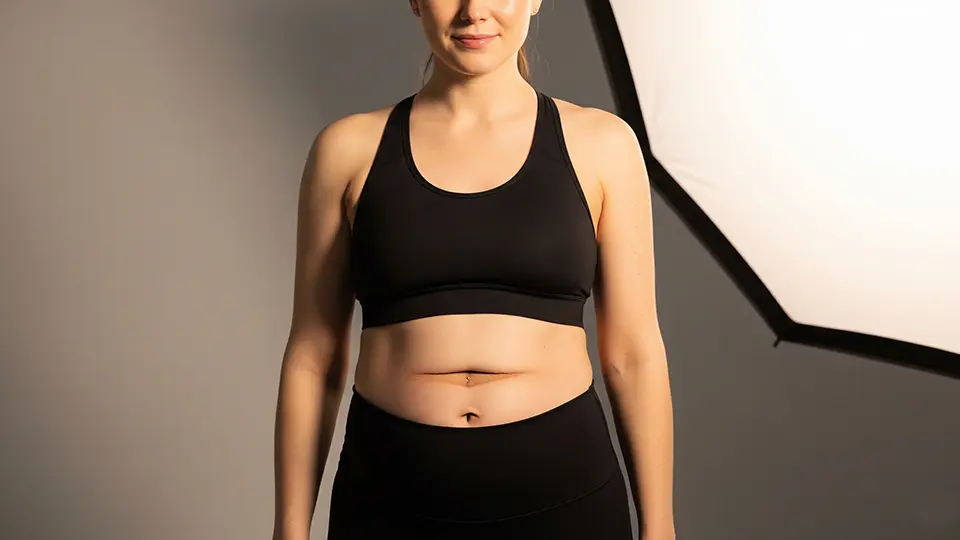
The shocking statistics nobody prepared me for:
- 60% of postpartum women have it at 6 weeks
- 32% still have it at 12 months
- Men get it too (especially with belly weight gain)
- Some babies are born with it (usually resolves by age 3)
But here’s where most articles get it wrong: a gap isn’t automatically a problem. I’ve seen women with 4-finger gaps who can do planks without issue, and women with 2-finger gaps who can’t lift their toddlers without back pain.
The Real Problem: When Your Core Can’t Do Its Job
Your core is supposed to work like a pressure system – think of a soda can that’s perfectly pressurized. With diastasis recti, you’ve got a weak spot in the can. Sometimes it’s fine. Sometimes the whole system fails.
Signs your gap is actually a problem:
- Your belly “domes” or “cones” during simple movements
- Back pain that wasn’t there before
- Feeling like your insides might fall out (they won’t, but that sensation is real)
- Leaking when you sneeze, laugh, or jump
- Constipation or bloating that’s new or worse
- Feeling generally weak through your middle
The Assessment That Changed Everything
Six weeks postpartum with my twins, I lay on my living room floor and did what I’d done for hundreds of patients – the self-check that would confirm what I already suspected.
How to Check Yourself (The Right Way)
Step 1: The Setup
- Lie on your back, knees bent, feet flat
- One hand behind your head for support
- Other hand positioned vertically at your belly button
Step 2: The Lift

- Slowly lift just your head (not shoulders) off the floor
- Feel for the gap between the muscle bands
- Check three spots: at your belly button, 2 inches above, 2 inches below
Step 3: The Assessment

- Width: How many fingers fit in the gap?
- Depth: Can you feel tension, or does your finger sink deep?
- Function: Does your belly dome up?
The measurements that matter:

- Less than 2 finger-widths: Normal
- 2-3 fingers: Mild diastasis
- 3-4 fingers: Moderate diastasis
- More than 4 fingers: Severe diastasis
But remember – width isn’t everything. I had a 4-finger gap but good tension. My colleague had a 2-finger gap with zero tension. Guess who recovered faster?
The Recovery Method That Actually Works
After treating hundreds of women (and men!) and going through my own recovery, I’ve developed what I call the “Foundation First Framework.” It’s not sexy. It’s not a quick fix. But it works.
Phase 1: Rewiring Your Brain-Body Connection (Weeks 1-4)
This is where 90% of programs fail. They jump straight to “ab exercises” without teaching your brain how to properly control your deep core again.

The Breath That Changes Everything
Forget everything you know about “sucking it in.” This is about expansion and coordination.
- 360-Degree Breathing:
- Place one hand on your ribs, one on your belly
- Inhale and let your ribs expand sideways (not just forward)
- Exhale gently, feeling a light lift in your pelvic floor
- Practice for 5 minutes, 3 times daily
- The TA Wake-Up Call: Your transverse abdominis (TA) is your body’s natural corset. It’s been on vacation for nine months.
- Lie comfortably, knees bent
- Exhale and imagine gently drawing your hip bones together
- Not sucking in – think about a gentle hug around your waist
- Hold for 5 seconds, breathing normally
- 10 reps, 3-5 times daily
What This Phase Really Looks Like:
- Doing breathing exercises while nursing
- Practicing TA activation during diaper changes
- Remembering to breathe properly while carrying the car seat
- Feeling like you’re not doing “real” exercise (you are!)
Phase 2: Building Your Foundation (Weeks 5-8)
Once your brain remembers how to talk to your deep core, we add movement.

The Exercises That Don’t Look Like Much But Do Everything:
- Dead Bug Prep:
- Start with just arms
- Progress to opposite arm/leg
- ONLY if no doming occurs
- 2 sets of 10
- Side-Lying Leg Lifts:
- Focuses on obliques without direct ab pressure
- Add resistance band when ready
- 2 sets of 12 each side
- Wall Sits with TA Activation:
- Full-body integration
- Hold 20-30 seconds
- 3 sets
- Modified Side Plank:
- Start on knees
- Progress to feet when no compensation
- Hold 15-20 seconds, 3 sets
The Reality Check: You’ll feel like these are too easy. Then you’ll be sore in muscles you forgot existed. Trust the process.
Phase 3: Functional Integration (Weeks 9-12)

This is where the magic happens – taking your newfound core strength into real life.
Real-Life Training:
- Carrying Progressions:
- Suitcase carry (weight on one side)
- Farmer’s carry (weights both sides)
- Front-loaded carry (baby carrier position!)
- 30-60 seconds, 3 sets
- Rotational Movements:
- Pallof press with band
- Wood chops (light weight)
- Standing marches with rotation
- 12-15 reps, 2-3 sets
- Squat to Stand:
- Mimics picking up kids/toys
- Add weight when ready
- Focus on alignment
- 15 reps, 3 sets
Phase 4: Return to Life (Weeks 13+)

The Graduation Checklist:
- ✓ Can lift your toddler without breath-holding
- ✓ Sneeze without fear (or leaking)
- ✓ Plank for 30 seconds without doming
- ✓ Run/jump without feeling unstable
- ✓ Core feels connected during daily activities
The Mistakes Everyone Makes (Including Me)
Mistake #1: Doing Traditional Ab Exercises too soon

I get it. You want your abs back. But crunches, sit-ups, and planks before you’re ready will make things worse. I learned this the hard way when I tried a plank at 8 weeks postpartum and watched my belly turn into a mountain range.
Safe Alternatives Timeline:
- Weeks 1-4: No traditional ab work
- Weeks 5-8: Modified positions only
- Weeks 9-12: Gradual introduction if no doming
- Week 13+: Full exercises if functional tests passed
Mistake #2: Ignoring the Other Pieces

Your core includes your:
- Diaphragm (breathing muscle)
- Pelvic floor
- Deep back muscles
- Deep abdominals
Ignore one, and the whole system fails. That’s why breathing exercises aren’t optional – they’re foundational.
Mistake #3: The “No Pain, No Gain” Mentality

If you see doming, stop. If you leak, modify. If your back hurts, regress. This isn’t about pushing through – it’s about building properly.
Mistake #4: Going It Alone

I’m a physical therapist, and I still worked with a colleague for my recovery. Why? Because we all need someone to check our form, modify our program, and remind us that progress isn’t always linear.
Special Considerations Nobody Talks About
For the C-Section Mamas

You have diastasis recti AND surgical recovery. Your timeline looks different:
- Wait for surgical clearance (usually 6-8 weeks)
- Scar mobilization is crucial
- May need longer Phase 1 (6-8 weeks)
- Core-pelvic floor connection often needs extra attention
For the Fitness Enthusiasts

I see you, trying to get back to CrossFit at 8 weeks postpartum. Your strength is your superpower and your kryptonite. You’ll progress faster through phases but are more likely to skip foundations.
Your Modified Timeline:
- Weeks 1-6: Foundations (yes, really)
- Weeks 7-10: Progressive loading
- Weeks 11-16: Sport-specific prep
- Week 17+: Gradual return to previous activities
For Men with Diastasis

Yes, it happens. Usually from:
- Rapid weight gain/loss
- Heavy lifting with poor form
- Abdominal surgeries
- Sometimes just genetics
The good news? You typically respond faster to treatment. The challenge? Getting you to do the “boring” foundation work.
For the “It’s Been Years” Crowd

Found this article and your “baby” is in kindergarten? You’re not too late. I’ve successfully treated women 10+ years postpartum. Your timeline might be longer, your tissues might need more coaxing, but improvement is absolutely possible.
When Surgery Becomes the Answer

Let’s be real about when conservative treatment isn’t enough.
Consider surgical consultation if:
- You’ve done 12+ months of consistent rehabilitation
- Gap is greater than 5cm with tissue deficiency
- Significant functional limitations remain
- There’s an associated hernia
- Quality of life is severely impacted
What Surgery Looks Like:
- Usually involves stitching the muscles back together
- Sometimes includes mesh reinforcement
- Often combined with excess skin removal
- Recovery is 6-12 weeks before starting rehab
- Not a guarantee – I’ve seen surgical repairs separate again
The Bottom Line: Surgery is a tool, not a failure. But exhaust conservative options first.
The Unexpected Victories Along the Way

My recovery wasn’t just about closing my gap (which went from 4 fingers to 1.5). It was about:
- The first time I sneezed without bracing
- Carrying both twins upstairs without back pain
- Doing a real push-up at 6 months postpartum
- Wearing a fitted dress without shapewear
- Teaching my first postnatal fitness class
- Running my first 5K post-twins
But mostly? It was about feeling like myself again.
Your Action Plan Starts Now
Week 1: Assess and Begin

- Perform self-assessment (or see a professional)
- Start 360-degree breathing
- Begin TA activation
- Take “before” photos (trust me)
Week 2-4: Foundation Building

- Continue breathing exercises
- Add basic TA exercises
- Focus on posture awareness
- Start pelvic floor connection
Week 5-8: Progressive Loading
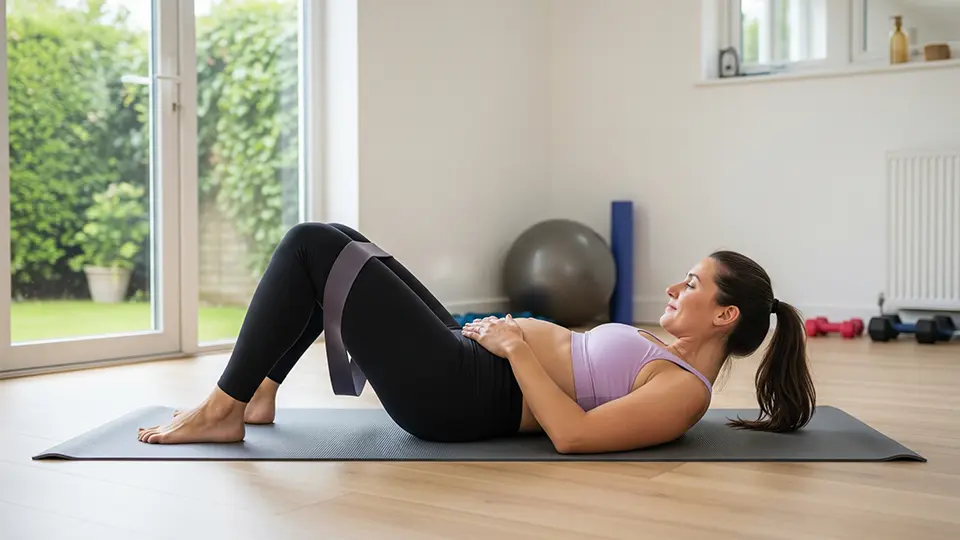
- Introduce Phase 2 exercises
- Monitor for doming
- Add resistance gradually
- Consider professional guidance
Week 9-12: Functional Integration

- Progress to Phase 3 exercises
- Test functional movements
- Gradually increase challenge
- Celebrate small wins
Beyond: Living Your Life

- Continue maintenance exercises
- Return to desired activities
- Share your story
- Help another mama
The Truth Nobody Tells You
Recovery isn’t linear. I had days where my gap felt bigger, where exercises that were easy became hard, where I wondered if I was making any progress at all.
But here’s what I know now, both as a professional and a survivor of twin pregnancy: Your body is not broken. It did something miraculous. Now it needs structured, patient rehabilitation – not punishment, not quick fixes, not giving up.
The statistics say 85% of women improve with proper treatment. But what they don’t capture is the 100% of women who feel empowered when they understand their bodies and take control of their recovery.
The Final Word
Eighteen months after discovering my 4-finger gap, I’m stronger than I was before pregnancy. Not despite my diastasis recti journey, but because of it. This recovery taught me to respect the foundation, celebrate small victories, and trust the process even when progress felt invisible.
Your gap might be 2 fingers or 5. You might be 6 weeks or 6 years postpartum. You might be a marathon runner or someone who just wants to carry groceries without back pain.
Wherever you’re starting, you can improve.
The path isn’t always straight, the timeline isn’t always what we want, but the destination – a functional, strong core that serves your life – is absolutely achievable.
Start today. Start with one breath. Start with believing your body can heal.
Because it can. And you deserve to feel whole again.
Iqra Kiran is a Doctor of Physical Therapy specializing in women’s health and postpartum recovery. After treating her own severe diastasis recti following twin pregnancy, she developed the Foundation First Framework that has helped hundreds of women reclaim their core strength. She lives in Portland with her husband, twins, and a core that can finally handle their chaos.
FAQs About Diastasis recti treatment
What is the fastest way to heal Diastasis Recti?
The fastest way to heal Diastasis Recti is through a consistent, guided exercise program designed to strengthen your deep core muscles and pelvic floor. Working with a physiotherapist ensures that exercises are done safely and effectively, preventing further abdominal separation.
Can Diastasis Recti heal without surgery?
Yes. Most mild to moderate cases of Diastasis Recti can be treated without surgery using targeted core rehabilitation exercises, proper posture, and body mechanics. Surgery is usually only recommended for severe cases or when conservative treatment fails.
How long does it take to fix Diastasis Recti?
Recovery time varies depending on the severity of the separation and your consistency with exercises. Many people see improvement within 8–12 weeks of a dedicated physiotherapy program, while full recovery can take several months.
Which exercises should I avoid with Diastasis Recti?
Avoid traditional sit-ups, crunches, heavy lifting without core engagement, and exercises that cause your belly to bulge or cone. These movements can worsen abdominal separation.
Is Diastasis Recti treatment safe during pregnancy?
Yes. Gentle, low-impact core exercises prescribed by a physiotherapist can help support your abdomen during pregnancy and may reduce the severity of Diastasis Recti after delivery.
Can men get Diastasis Recti, and is the treatment different?
Men can also develop Diastasis Recti, often from heavy lifting, weight gain, or incorrect abdominal training. The treatment approach is similar, focusing on deep core strengthening and avoiding movements that strain the abdominal wall.
Do belly binders or abdominal wraps help treat Diastasis Recti?
Belly binders may offer temporary support and improve posture, but they do not cure Diastasis Recti. They should be used alongside a proper exercise program for best results.
Can I fix Diastasis Recti at home?
Yes, mild cases can often be improved at home with the right exercises, but it’s best to consult a physiotherapist to ensure you are using safe and effective techniques.
When should I consider surgery for Diastasis Recti?
Surgery may be considered if there is severe separation, functional problems like hernias, or if symptoms persist after at least 6–12 months of consistent conservative treatment.
Will Diastasis Recti come back after treatment?
It can return if the abdominal wall is exposed to excessive strain without proper core engagement. Maintaining core strength and good posture is key to preventing recurrence.
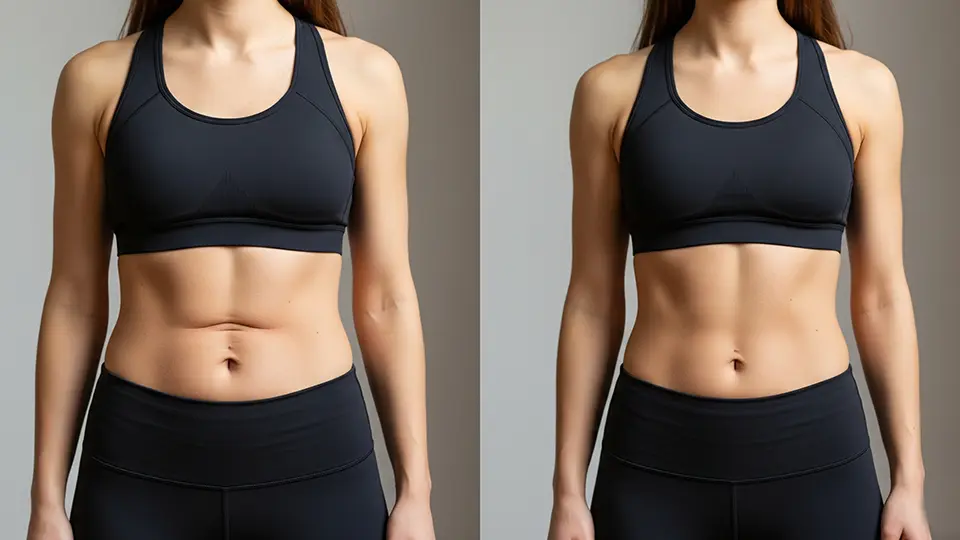


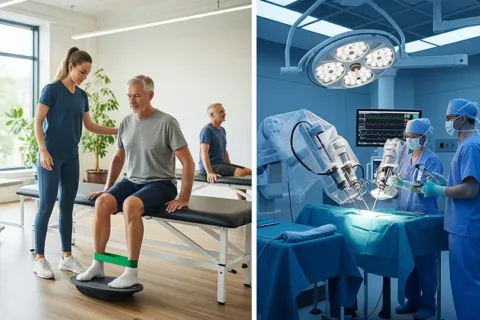

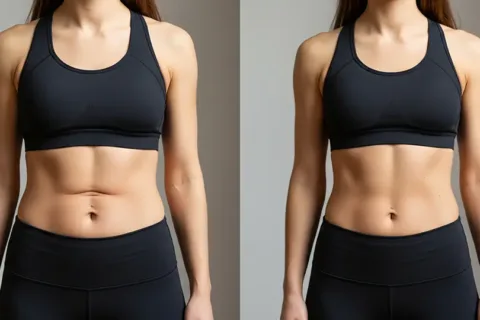


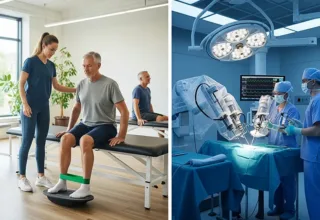


4 thoughts on “The Truth About Diastasis Recti: Your Complete Recovery Roadmap from Diagnosis to Full Function”
I have been absent for some time, but now I remember why I used to love this website. Thanks , I¦ll try and check back more frequently. How frequently you update your website?
Hi, I need your advice. Please get in touch by phone or WhatsApp.[url=https://wa.me/+79189593217] Text me on Whatsapp for quick communication[/url]
great article
Nicely delivered